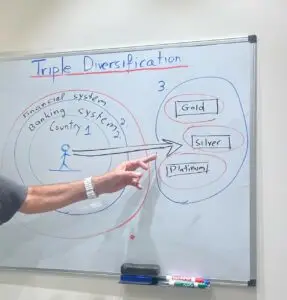Brazing is a process of joining two or more metal pieces together using a filler metal that melts at a temperature above 450°C (840°F), but below the melting point of the metal being joined.
In brazing, the filler metal is heated and melted into the joint between the two metal pieces, where it solidifies and forms a strong, permanent bond. The brazing process differs from welding, where the metal being joined is melted and fused together.
Brazing is commonly used in the manufacturing of jewelry, as well as in the production of electronic components, aerospace parts, and plumbing fixtures. It is a popular technique for joining precious metals such as gold, silver, and platinum, as well as other metals like copper, brass, and steel.
One advantage of brazing is that it allows for the creation of intricate and delicate metal structures without compromising their strength. The brazed joint is typically stronger than the metals being joined, and the process can be used to join dissimilar metals that would be difficult to weld.
Overall, brazing is an important technique for joining metals in a wide range of applications, including those that require high strength, tight tolerances, and a high-quality finish.
Gold, Brass and Silver brazing
Gold, silver, and brass are commonly used as filler metals in brazing, each with its own unique properties and advantages.
Gold brazing is typically used in jewelry manufacturing, where it is prized for its high melting point, corrosion resistance, and attractive appearance. Gold is also an excellent conductor of electricity, which makes it ideal for electronic components and other applications that require high conductivity.
Silver brazing is another popular choice, particularly for joining copper and brass. Silver has a lower melting point than gold, making it easier to work with, but it still produces strong and durable joints. Silver also has good thermal and electrical conductivity, making it suitable for a variety of applications, including plumbing, HVAC systems, and electronic devices.
Brass brazing, also known as bronze brazing, involves the use of a copper-zinc alloy as the filler metal. Brass has a low melting point and flows easily, making it ideal for filling gaps and creating tight seals. It is commonly used in the automotive and aerospace industries, as well as in the manufacturing of metal artwork and sculptures.
Things to consider before brazing
In order to get a good join between the parts that are brazed, it is important to make the right plan (designing) and preparation.
Below is a list of few points to consider:
- Type of joint: flat, lap,tubular.
- Bonding area.
- Gap between parts.
- Type of brazing alloy.
- Cleaning the surface.
- Using FLUX to protect from oxygen and help the filler flow.
- Consider the coefficient of thermal expansion (important when two parts are not the same alloy).
- When joining a few parts it is important to use brazing with different melting points starting from high to low (this eliminates the option that when brazing one part the other is released).
Overall, the choice of filler metal depends on the specific requirements of the application, including the types of metals being joined, the desired strength and durability of the joint, and the appearance of the finished product. A skilled brazing technician can help determine the best choice of filler metal for a particular application.



